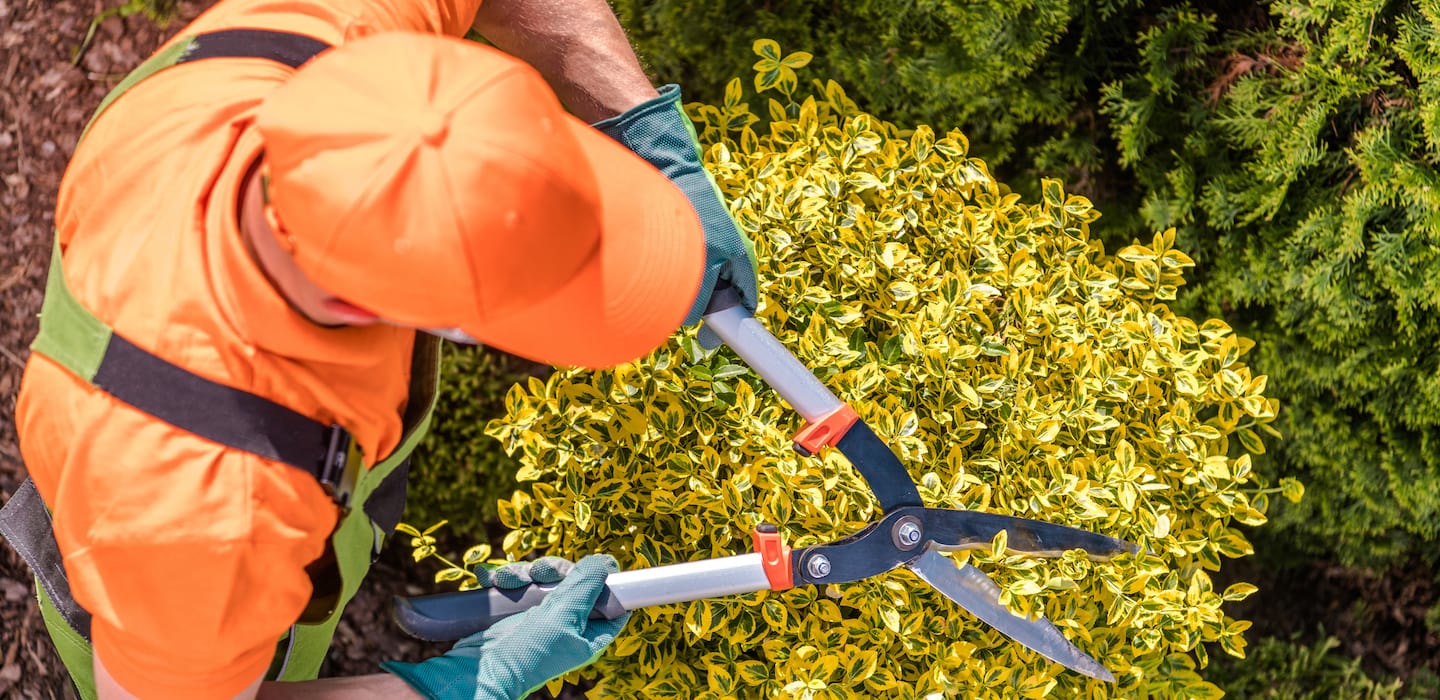An arborist’s tools help him or her shine on the job. Before you start your next job, make sure you have all of the necessary tree trimming equipment to do it right. We’ve organized our list into three categories to help you check off the most important equipment as you go.

Commercial tree trimming equipment guide
December 27, 2021
An arborist’s tools help him or her shine on the job.
Whenever climbing a tree is required, it means extra care and gear are necessary. Safety should always be the top priority when you climb. Luckily, there are many commercial tree trimming tools available to ensure safety and comfort when you need to go high. Along with personal protective necessities, like gloves, goggles, and scratch-resistant clothes, key climbing tools include:
Helmets
These are available in many styles and sizes, ensuring a custom fit. An ideal helmet should have a cushioned interior that protects the top and sides of the head from impacts and a chin strap to ensure it stays put. Many come with a built-in face shield and ear muffs so you have added protection from debris and noise without the need to buy extra gear.
Harnesses
Provides fall protection via an aerial-lift system. The best harnesses should be plenty strong but still flexible enough to navigate around branches. If you’ll be working in cold-weather conditions, look for a harness with adjustable leg loops to accommodate extra clothing layers when the season demands it.
Saddles
Often integrated into a harness, saddles have a seat for the wearer. Advances in technology have made harnesses more breathable and ergonomic. Saddles are available in different styles to suit your needs, whether you prefer added back support or a lightweight option.
Ropes
Climbing rope is much different from other types of rope as it is specifically designed to be strong, rigid, and abrasion-resistant. It comes in a range of sizes, from 10 to 13 mm. A thicker rope is heavier but offers a better grip. You should have different sizes of rope available for different heights when you’re using rope to guide felled limbs. Ideally, the rope should be double the length of the limb height.
As a tree expert, you know every tree requires different maintenance and attention. Whether you’re giving a tree a structural prune or dead-wooding, make sure you have the right commercial tree trimming equipment for each cut.
Chainsaws
A versatile option and often a go-to piece of commercial tree trimming equipment, they come in a variety of sizes and power options, including gas, electric, and hydraulic. Whichever you choose, ensure your chainsaw has the bucking spikes necessary to keep it stable during use.
Hand saws
While they require extra elbow grease, it is necessary to have different sizes of hand saws available for work on smaller limbs. Look for ones that are ergonomic and designed for an easy start as well as smooth cutting transitions.
Pole saws
When branches are just out of reach, pole saws are a reliable option. They are typically lightweight and able to reach heights of 15 feet or more, minimizing the need for ladders or hoisting on some jobs.
Tree loppers
Depending on the maintenance required, it is ideal to have bypass loppers (preferred for live branches) and anvil loppers (recommended for dead branches). When selecting a lopper, consider the give and take when it comes to the handle length. While a 32-inch lopper offers more leverage, it is heavier and may not provide as clean of a cut.
Wedges
When felling a tree, wedges are key to avoiding getting the chainsaw bar pinched. They also help direct the direction the tree falls. Make sure you have multiple sizes of wedges to accommodate different sizes of trees.
Hand shears
Like extra-large scissors, hand shears function as a basic tool for anyone who needs to trim small yet thick branches. They are also available in bypass or anvil style and come in different sizes. When choosing the right ones, keep in mind that high-carbon steel offers added durability.
Pruners
The smaller cousin of hand shears, these are designed for one-handed use. Compact and durable, they make trimming small branches a quick, easy task. You’ll be using your pruners most frequently, so select a pair that comes with an attachable sheath, and look for a style with cushioned handles to reduce pressure on your hands.
Pruning saws
Sometimes the job falls somewhere in between a hand pruner and a lopper. Pruning saws offer a versatile manual option. They come in many sizes and shapes, as well as foldable or non-foldable versions. The latter kind is often longer but can enhance stability.
While tree trimming may be the main task at hand, every job likely includes additional maintenance, from planning to cleanup work. Along with climbing and cutting commercial tree trimming equipment, some basics need to come along for the ride, including shovels, rakes, marking paint, tape measures, sight levels, and tampers. A few other necessities include:
First aid kits
While any kit will have the basics, tree trimmers need to be extra prepared. A larger first aid kit is needed that allows for treating more severe wounds, such as punctures or cuts. Ideally, look for one that can be attached to a harness so it is readily available if you need it when climbing.
Traffic cones
If the job requires working by a street, traffic cones may be required to mark off the work area. Ensure that the cones you select meet federal and local standards and offer high visibility for pedestrians and cars.
Ground protection mats
Reaching a tree that desperately needs your help may require traversing a pristine lawn or a paved patio area. Protection mats disperse weight to minimize damage. Your mat should be big enough to accommodate your equipment and easily maneuverable.
Get Greenlight in your inbox.
Just four minutes long, and just for small businesses.




